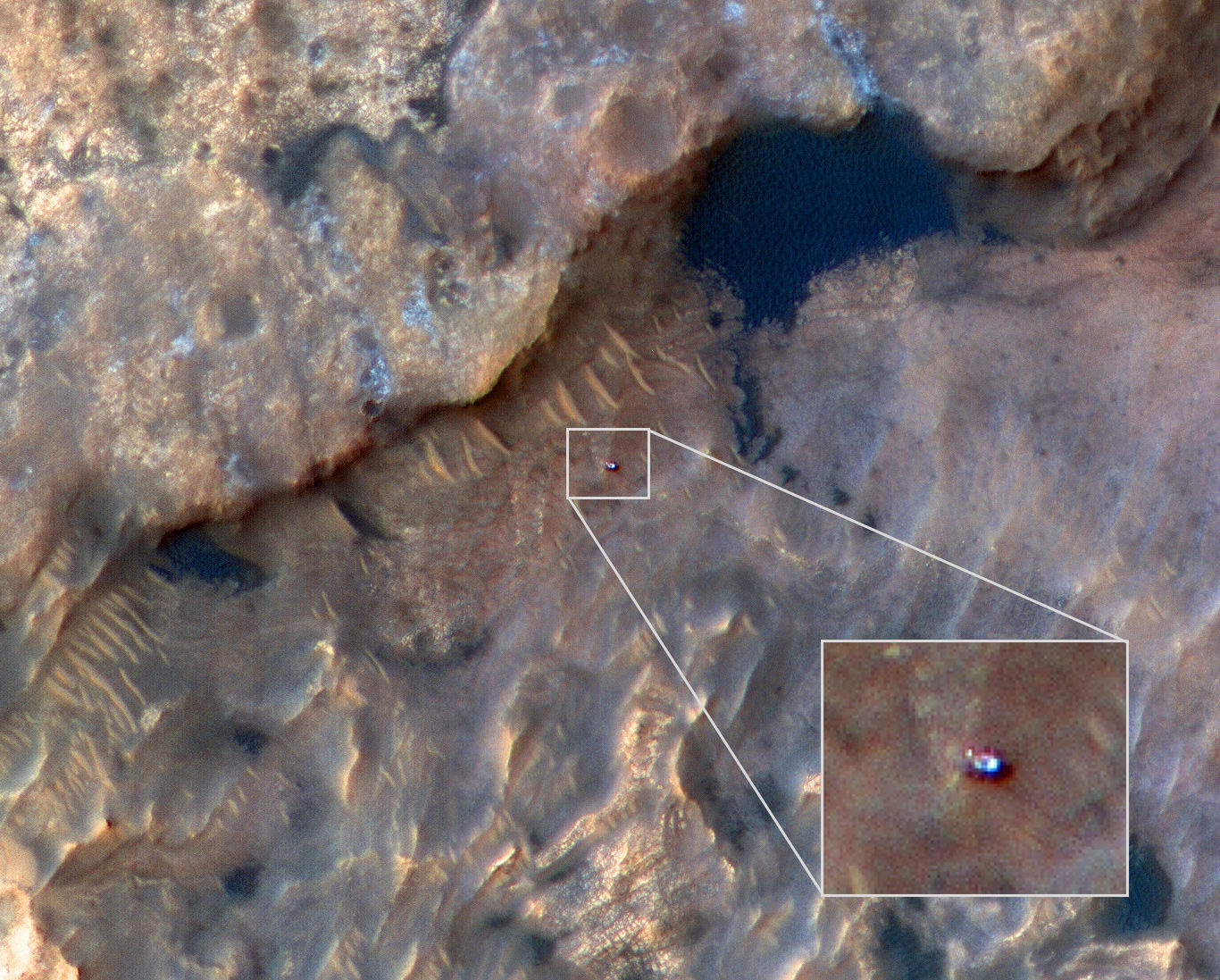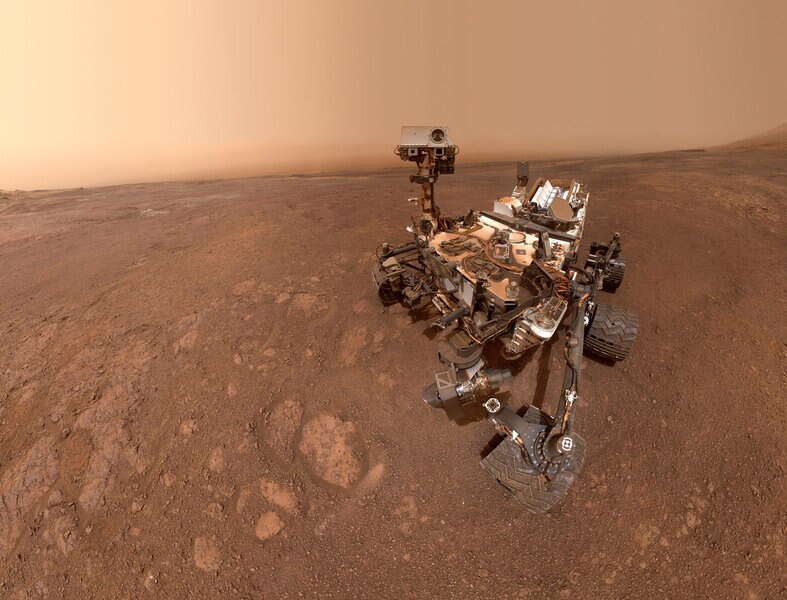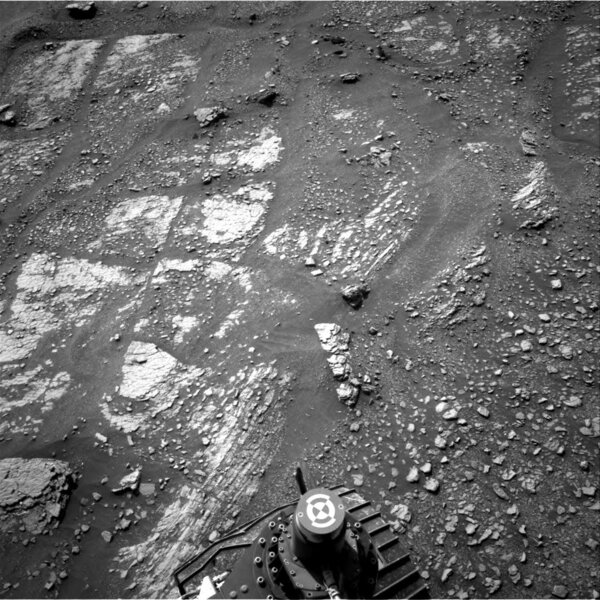Create a free profile to get unlimited access to exclusive videos, sweepstakes, and more!
Orbiting Mars robot sees roving Mars robot. It’s Mars robots all the way down.

It’s been said that Mars is a planet populated solely by robots.
This statement is correct. There is one active rover on Mars, one lander sending us data, and a host of orbiters all scanning the surface, the air, and the sky to help us learn more about this Red Planet that is simultaneously so like and so unlike our own blue-green one.
One such proxy is the Mars Reconnaissance Orbiter, equipped with a camera called HiRISE that can take images of such clarity it can see objects less than a meter across on the surface below.
And hey, another such proxy is the Curiosity rover, which is bigger than a meter. Quite a bit so, in fact, which means it is sometimes visible to HiRISE. And that means…
Yup. We get photos of the rover taken… from spaaaaaace!
Oh, I love things like this. This HiRISE image of Curiosity was taken on May 31, 2019. Curiosity landed in the huge Gale Crater, over 150 kilometers across and well over 3 billion years old. As it makes its way to the central mountain, called Aeolis Mons (or colloquially, Mt. Sharp), it has passed a lot of really interesting geological features.
In this case, it was at “Woodland Bay”, an area of laminated rock — layered sedimentary deposits; a long time ago Gale Crater was a lake. The rock is near the base of a ridge called Vera Rubin ridge, named after an astronomer who discovered dark matter.
In the HiRISE image you can see the elongated body of the rover — it’s about 3 meters long — and what looks to be the head of the mast to the upper left. I tried to find a shot of the rover (selfie or artwork) in this position, but couldn’t find any. But this should make the overall shape of Curiosity clear:
That is a mosaic of several images it took of itself in January while it was at Vera Rubin ridge, appropriately enough (by taking many pictures using the robot arm with a camera on the end, the images can be stitched together so the arm itself isn’t in the final shot). In the HiRISE image there are several bright spots, which are probably sunlight glints, where the Sun reflected off of shiny bits on the rover.
Shots like this are extremely cool, but also scientifically useful. Curiosity was sent to Gale Crater because we knew it had standing water in it billions of years ago, so the rover is looking to see what things are like there now compared to way back when. While it’s not looking for life directly, it’s examining the conditions where life might once have arisen. It can take close-up shots of rocks, sand, and geologic formations, as well as get the chemical composition of these objects. HiRISE images from space put these into context, to see what the situation is regionally — it’s like looking at the box top from a jigsaw puzzle to see where a particular piece fits. The puzzle is fun, but so is understanding the picture it will eventually produce.
Curiosity landed on Mars on August 6, 2012, so it’s approaching its 7th (Earth-year) anniversary on the planet. Its original mission was for two years, but as is typical for JPL machines sent to Mars, it’s performing so well it may last for many years yet. It has already hugely increased our understanding of Mars; what else will it reveal to us in the coming years?





























